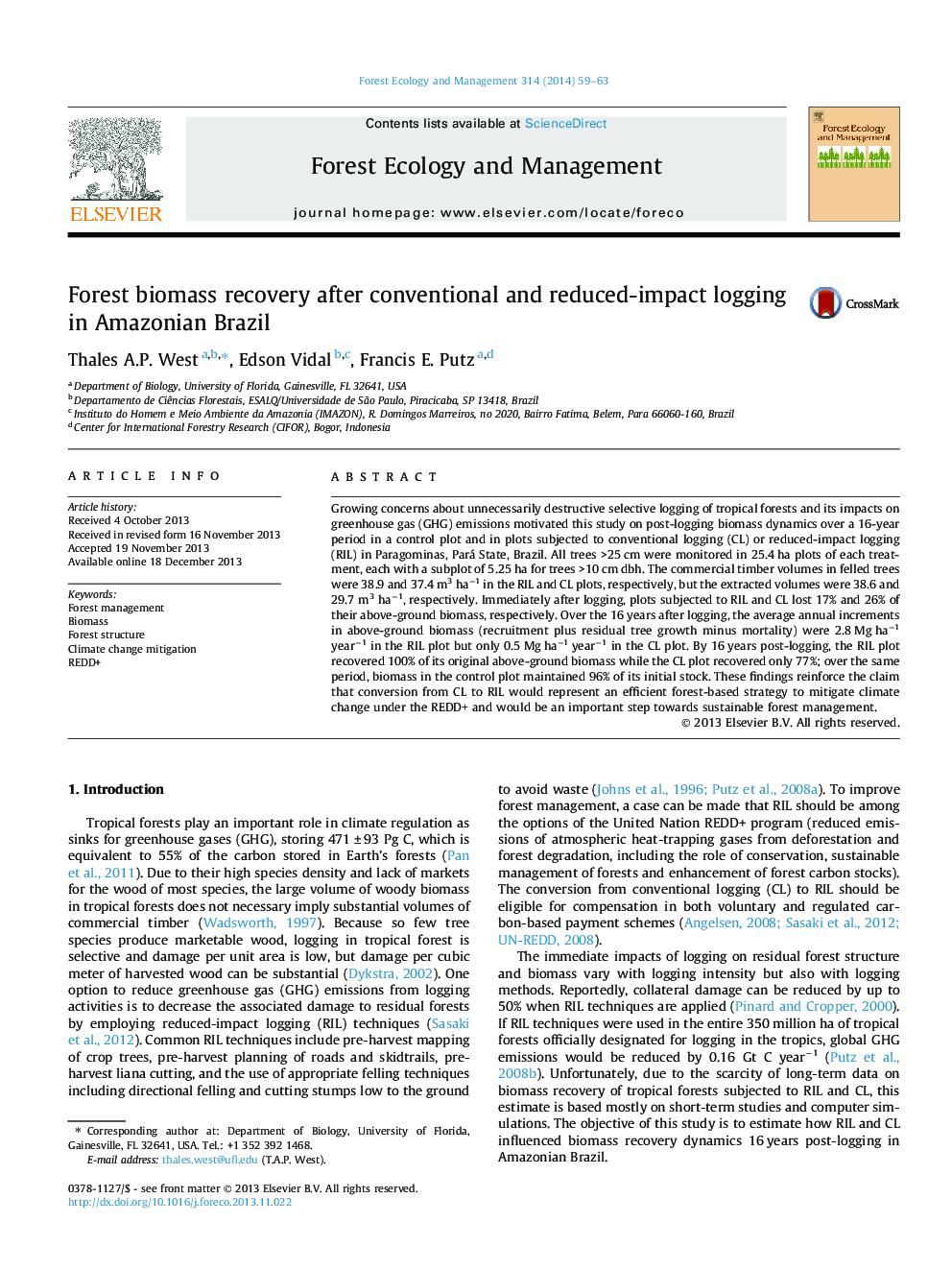| کد مقاله | کد نشریه | سال انتشار | مقاله انگلیسی | نسخه تمام متن |
|---|---|---|---|---|
| 86934 | 159223 | 2014 | 5 صفحه PDF | دانلود رایگان |
• Logging-induced biomass losses were greater in the plot under CL than RIL.
• By 16 years post-logging, the RIL plot recovered 100% of its original ABG biomass.
• By 16 years post-logging, the CL plot recovered 77% of its original ABG biomass.
• ABG biomass of trees >60 cm DBH did not recover by 16 years post-logging.
• Average annual increment in ABG biomass was 6-times higher in the RIL than CL.
Growing concerns about unnecessarily destructive selective logging of tropical forests and its impacts on greenhouse gas (GHG) emissions motivated this study on post-logging biomass dynamics over a 16-year period in a control plot and in plots subjected to conventional logging (CL) or reduced-impact logging (RIL) in Paragominas, Pará State, Brazil. All trees >25 cm were monitored in 25.4 ha plots of each treatment, each with a subplot of 5.25 ha for trees >10 cm dbh. The commercial timber volumes in felled trees were 38.9 and 37.4 m3 ha−1 in the RIL and CL plots, respectively, but the extracted volumes were 38.6 and 29.7 m3 ha−1, respectively. Immediately after logging, plots subjected to RIL and CL lost 17% and 26% of their above-ground biomass, respectively. Over the 16 years after logging, the average annual increments in above-ground biomass (recruitment plus residual tree growth minus mortality) were 2.8 Mg ha−1 year−1 in the RIL plot but only 0.5 Mg ha−1 year−1 in the CL plot. By 16 years post-logging, the RIL plot recovered 100% of its original above-ground biomass while the CL plot recovered only 77%; over the same period, biomass in the control plot maintained 96% of its initial stock. These findings reinforce the claim that conversion from CL to RIL would represent an efficient forest-based strategy to mitigate climate change under the REDD+ and would be an important step towards sustainable forest management.
Journal: Forest Ecology and Management - Volume 314, 15 February 2014, Pages 59–63
